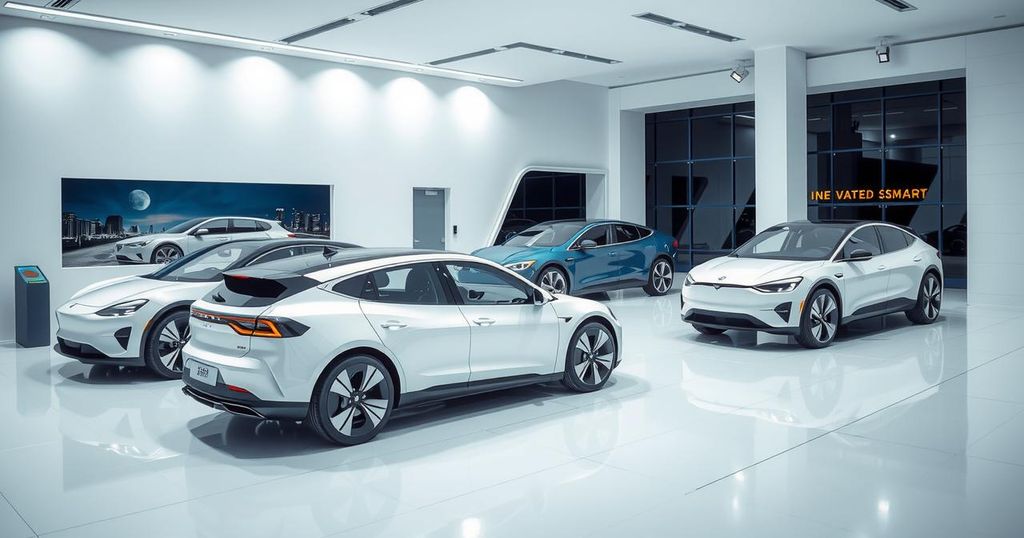Exploring Iran’s Unique Peugeot 405 Tuner Culture
Iran has cultivated a unique tuner culture centered around the Peugeot 405, which has been produced for over three decades. Enthusiasts predominantly modify these vehicles, often lifting the rear end for both practicality and style. This distinctive trend has origins in smuggling practices, yet has evolved into a popular aesthetic within the local car community. Car enthusiasts like Shayan emphasize the enduring affection for the model and the vibrant culture surrounding it in Iran.
In the world of automotive culture, each country has carved out its own unique identity, particularly when it comes to tuning practices. While Americans typically favor their muscle cars and lifted trucks and Australians gravitate toward powerful V8 sedans, Iran has embraced a distinctive movement centered around the Peugeot 405. This French sedan has captured the hearts of many automotive enthusiasts in the country in ways quite unlike anything seen elsewhere.
Initial production of the Peugeot 405 began in France in 1987, with an Iranian factory commencing operations in 1992. Fast forward to 2023, and the Peugeot PARS, an updated version, continues to roll off assembly lines in Iran, albeit the model’s production ceased mid-last year due to rising competition from modern Chinese vehicles. The 405’s long-standing presence means there are countless examples on the roads of Iran today, making it a vital part of local car culture, particularly among tuners and modifiers.
It is somewhat challenging to find high-quality videos capturing the car culture in Iran, especially beyond brief clips. However, one particular video casts a spotlight on the Peugeot scene, showcasing the modifications and styles beloved in the region. Recently, a conversation with local enthusiast Shayan provided further insights into this unique phenomenon.
Shayan, after finding our previous coverage, reached out to share his perspective. “To be honest, we in Iran really like the Peugeot 405,” he stated. He noted a widespread admiration for the car across different age groups in Iran. Shayan provided a glimpse into the car modifications popular among fellow enthusiasts, such as the coveted GLX trim of the 405, known for its attractive design and desirable engines.
The GLX stands out with its 1.8-liter XU7 L3 engine, generating 100 hp and 112 lb-ft of torque. While these numbers are modest, they do not deter Iranian tuners from pushing the limits. Modifications are common, with enthusiasts upgrading intake systems and exhausts for enhanced performance. Some ambitious tuners reportedly boost their cars to as much as 700 horsepower using turbo and nitrous kits, demonstrating a clear passion for performance over pure dyno numbers.
The later Pars ELX is similarly popular, featuring a 1.9-liter engine that offers slightly more power. While the stock Peugeot 405 or Pars may reach 118 mph, some have boasted speeds of 161 mph, including a proud claim from Shayan. Speed runs appear to be a favorite pastime among Iranian Peugeot fans, with many sharing videos on platforms like Instagram.
Interestingly, a visual trend has emerged among enthusiasts: the rear of the Peugeot 405 is often modified to be lifted high off the ground. This contrasts with typical Western tuning practices focused on lowering cars. As Shayan explained, this trend’s origins lie in smuggling—rear lifts prevent the vehicle from scraping the ground when loaded. In this regard, the heightened stance has transitioned into a stylistic choice within the enthusiast community.
Some owners achieve this lifted look through air suspension systems, providing a dual purpose: aesthetics and functional adaptability. This innovation has led to fascinating creations, such as one Peugeot reportedly outfitted with caltrop dispensers to hinder pursuers. Car meets in Iran reveal a vibrant atmosphere centered around modified 405s, with elegant touches like teal trim and distinctive appearances blending into a rich local culture. Shayan himself showcased his 405 GLX, which displays many of the community’s typical modifications.
Despite the challenges of limited Western access to Iranian automotive culture—partly due to political restrictions—Shayan’s insights highlight the ongoing affection for the Peugeot 405. This model resonates across a nation of eager drivers, with the love for this car providing common ground in a world often divided by distance and misunderstanding. So, while divergence is apparent in international tuning styles, the universal appeal of customizing cars remains a tangible connection across cultures. As Shayan aptly noted, enthusiasts continue to push these vehicles, demonstrating that wherever there are people and cars, rich traditions of automotive passion will emerge.
The Peugeot 405 has evolved into an emblematic figure within Iran’s tuning culture, reflecting local preferences and practical needs. Despite its humble beginnings, the car has fostered a unique community of enthusiasts who innovate and modify to create something special. The contrast between typical Western tuning trends and the distinctive lifted aesthetic observed in Iran adds a layer of complexity to the automotive landscape. As enthusiasts like Shayan share their passion and insights, it becomes clear that the love for cars transcends cultural barriers, making the shared joy of automotive culture a global phenomenon. In conclusion, Iran’s Peugeot tuning culture is a fascinating blend of practicality and stylistic innovation, symbolizing a deep-rooted appreciation for the everyday vehicle that many call their own.
Original Source: www.theautopian.com




Post Comment